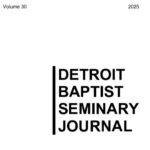What Really Happened in the Incarnation? Some Thoughts from the Fourth Century
Did Christ exist before he was conceived in the womb of the Virgin Mary? And if he did, in what sense did he exist before his incarnation? In the early fourth century, a church leader named Arius came into conflict with Alexander (bishop in Alexandria, Egypt) over questions related to the incarnation of the Son of God and especially the relationship between the Father and the Son. According to the church historian Socrates Scholasticus, Arius concluded among other things that the Father-Son relationship implied that “there was a time when the Son was not” (Socrates, Ecclesiastical History 1.5).
Arius was apparently a very persuasive spokesman for his distinctive views, and many others were inclined to accept his teachings. In order to counter the spread of Arius’s heresies, Alexander convened a regional council and had Arius removed from church leadership and excommunicated from the church. Alexander then sent around a letter to other church leaders warning them about the recently defrocked Arius and his heretical teachings. Here are some of the doctrines which Alexander attributed to Arius in that letter: “That God was not always the Father, but that there was a period when he was not the Father; that the Word of God was not from eternity, but was made out of nothing; for that the ever-existing God (‘the I AM’—the eternal One) made him who did not exist, out of nothing; wherefore there was a time when he did not exist, inasmuch as the Son is a creature and a work. That he is neither like the Father as it regards his essence, nor is by nature either the Father’s true Word, or true Wisdom, but indeed one of his works and creatures…. Wherefore he is as to his nature mutable and susceptible of change, as all other rational creatures are: hence the Word is alien to and other than the essence of God” (Socrates, Ecclesiastical History 1.6).
Alexander’s circular letter informed many church leaders about Arius, but unfortunately it failed to hold back the flood waters of Arianism. It would fall to Athanasius, Alexander’s young protégé and eventual successor in Alexandria, to stand as a leading spokesman against Arianism at the Council of Nicaea in 325 and for many years to follow. Although likely written before the rise of Arianism, one of the most important early volumes arguing for the orthodox understanding of Christ’s incarnation was a short work penned by Athanasius and simply titled On the Incarnation. In that volume, Athanasius laid out the main problem created by humankind’s fall into sin, and he set forth Christ as the only solution to the problem that was consistent with both divine grace and the holy character of God. In contrast to Arius, Athanasius described Christ as the Word and the eternal Son of God who became united with our nature to rescue condemned sinners. Athanasius argued that only the Creator of humankind could possibly save fallen humans from the just wrath of God. And Athanasius rightly concluded that the “divine dilemma” finds its perfect solution in the incarnation of the Son of God—an incarnation for the purpose of salvation.
 Christmas—a time when we celebrate the incarnation of the Son of God—is certainly a time to remember the events which took place in and around Bethlehem some 2,000 years ago. But the story of Christmas doesn’t end in Bethlehem. It necessarily goes on to include the events which took place a few decades later at Calvary and in a garden tomb that was found empty one Sunday morning.
Christmas—a time when we celebrate the incarnation of the Son of God—is certainly a time to remember the events which took place in and around Bethlehem some 2,000 years ago. But the story of Christmas doesn’t end in Bethlehem. It necessarily goes on to include the events which took place a few decades later at Calvary and in a garden tomb that was found empty one Sunday morning.


